Elbit Systems UK recently conducted successful demonstrations of its Seagull Uncrewed Surface Vessel (USV) to showcase its proven autonomous mine hunting technology for the Ministry of Defence.
The Wilton Industry Show and Experiment (WISEX) demonstrations aimed to provide MOD and industry partners with an analysis of Seagull’s mine hunting capabilities under operational conditions.
The WISEX demonstrations took place off the coast of Scotland and Seagull™ achieved a 100% target detection rate, say the firm.
“As part of the Royal Navy’s transition towards an autonomous Mine Hunting Capability, MOD invited Elbit Systems UK to demonstrate Seagull and her Mine Countermeasure (MCM) toolbox sub-systems under operational conditions – involving key environmental variables, such as differing depths, currents and tidal streams – in UK Waters in Scotland.
The demonstrations took place in July and August and involved showcasing specific capability to provide the Royal Navy with the evidence required to inform the progress of its Mine Hunting Capability Programme. Co-sponsored by Navy DEVELOP and Defence Equipment & Support (DE&S), the demonstrations were also supported by Dstl stakeholders.”
Elbit say that the demonstration area comprised two simulated minefields seeded with mine-like objects to challenge Seagull’s detection and MCM capabilities.
“Despite the demanding sea state, the demonstrations were a resounding success, with the Seagull USV and her mission system payloads achieving a target detection and identification rate of 100%. Seagull is the only operationally proven USV currently available in the world, and it can be deployed for a variety of crewed and uncrewed missions. Modular and agnostic in design, Seagull’s mission system payloads can be used to support Mine Warfare, Anti-Submarine Warfare, Anti-Surface Warfare, Electronic Warfare and ISR operations – providing navies with a full spectrum of autonomous operational capability. Additionally, its Mission Command Station can be operated from a mothership, from a headquarters, or transported in a mission module vehicle to a remote location onshore – as was the case during the WISEX demonstrations.”
Martin Fausset, CEO of Elbit Systems UK, said:
“The great success of the Seagull™ trials proves that Elbit Systems UK is spearheading USV technology globally, and that our cutting-edge autonomous maritime technology offers innovative and consistent results. These demonstrations provided the Royal Navy with the evidence necessary to inform the requirements of MOD’s programme development trials, and further highlights our continued commitment to developing technology designed to safeguard our Armed Forces.”
Commander Ben Stait said:
“The Royal Navy has established WISEX to allow industry to demonstrate their autonomous mine countermeasures systems, in the challenging naval exercise areas of the west coast of Scotland. This demonstration is part of the Mine Hunting Capability programme, which is at the forefront of next generation maritime autonomous systems. The Royal Navy is grateful for Elbit Systems UK participation and excited by the capability they demonstrated as the programme develops into its next phase.”


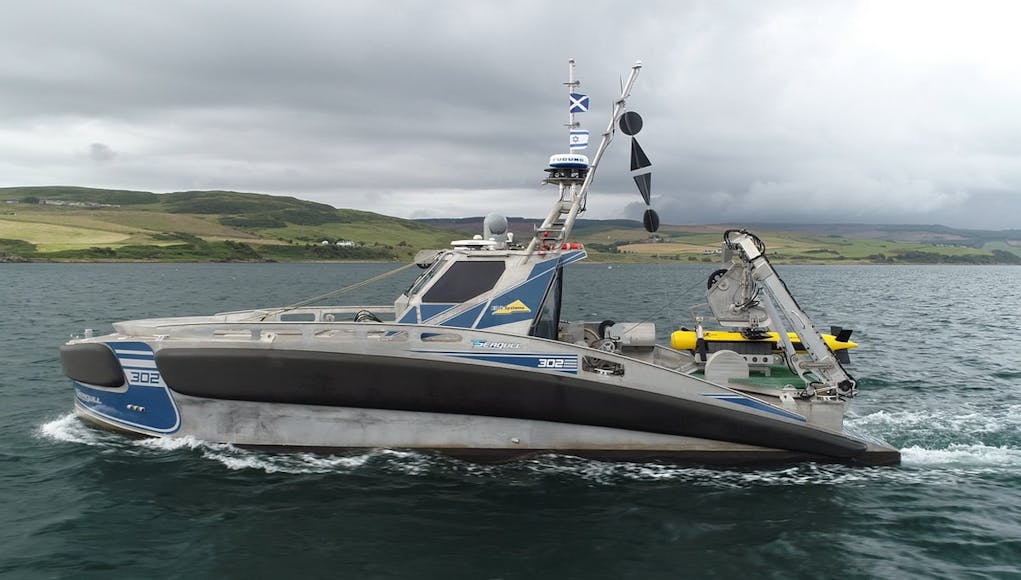


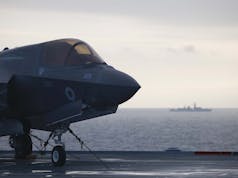
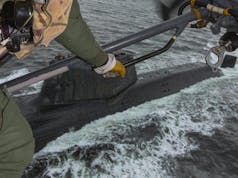

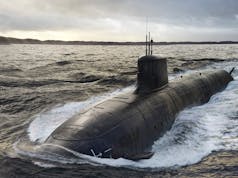


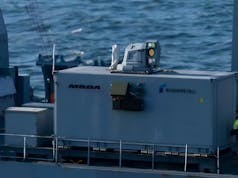


So drones can detect the mine and sweep for it. Great. What about destruction of said threat?
I would imagine that another drone would be used to plant a charge on/close to said threat. I also imagine that someone will be sat somewhere controlling the whole evolution, so not altogether autonomous!!
Sweeping isnt just mechanical sweeps that cut wires. By using electrical pulsing to activate magnetic mines and noise makers to activate acoustic mines you also sweep.
Bottom mines are dealt with by a UwAV with a remotley placed explosive charge linked to an acoustic pinger. You lay the charge on or close to the bottom mine and retire the UwAV to a safe distance. You can then use a coded sonar pulse to detonate it. Alternatively drop a seafox ( Other destructors are available!) down and kill it that way. Seafox does cost a lot and you dont get it back . The RN is now moving to a Saab system that carries 3 charges so you can destroy three targets at a time.
Ummm does it work in warm water😎
Well it’s an Israeli company so 😁😁
Haha!
All these systems are great but how long/far can these system operate at? ie: how many motherships will be needs to maintin/support these and how close will they need to be. Small launches like in the picture are great for clearing approaches to Clyde etc but not for sweeping large areas potentially far from a secure port.
If the range is not in the scope of a week/ hundreds of miles plus before needing to return then surely they are just devices that should be launched from Hunts/Sandowns but allowing them to go in behind rather than towing through a potential field.
Compared to operating plastic ships that had to be carried on the back of larger ships to deploy long range and cost hundred of millions this is a massive improvement. Any commercial style vessel can operate these any where in the world.
These boats dont need feeding , watch changes, RO Plants, a galley, magazines, DG sets, bunks and all the operators on the boat. All that is on the mothership at a safe distance from the minefield and in vastly reduced numbers.
Initially you use a boat to survey an area and identify possible targets using a towed sidescan sonar body. Then you reconfigure for sweeping or hunting.
Sweeping is quick and covers a wide area however it isnt 100% certain to get all the mines , especially those with counters fitted.
Hunting is slow and laborious but you are pretty certain to get 100% of the mines in an area.
Sandowns and Hunts cannot support or operate these boats. It was looked at but the stability issues of carrying, deploying and recovering 10 Tonnes of boat was a none starter.
Thanks GB, just not understanding, to my simple view 16 MCM can work 16 different dispersed areas ( i know that is vey simplified) having 4/5 motherships is great but can the drones travel hundreads of miles from mothership to do sweeps? if as you say the mothership identifies potential with side scan then we can only carry out ops in 1/3 of the areas previously.
I heard USV-based MCM operation is “ten times efficient” than those covered by existing MCMVs. (if me memory works, it was RN official press release).
ARCIMS drones, in ASW mode, has an
endurace of 18 hours
can operate 60 nm away from the mother ship.
See reference.
Both ARCIMS and Elbits’ USV systems can operated with sat-com.
So, it does need a mother ship located around, but well outside the mine-field. Also, as UK MCMVs are working in pair, you need at most 6 motherships/shorebases to “replace” 12 MCMVs (not 16, it is now 12).
MHC block 1 is made of 6 USV-MCM systems (3 hunt, and 3 sweep).
MHC block 2 is made of 6 USV-MCM systems (6 hunt) and 3 Logistic Support Vessels.
Not increase for sure, but maybe not decrease so much, because anyway some must be located at Clyde.
ref: http://www.atlas-elektronik.com/fileadmin/user_upload/01_Images/Solutions/ARCIMS/ARCIMS_SeaSense_Brochure.pdf
So given Atlas’ range and speed and time needed to return for refuel etc, how many are needed to do the job of 2 Hunts and will our new motherships carry that many?
To my understanding, 2 USV and a mothership can do MUCH MORE than 2 Hunts can do…
Of course “ten time faster” shall be exggaration, but not surprise to see 1 USV and 1 mother ship can do the same or more than 2 Hunts.
This is the reason the world is going for USV-MCM tactics.
What is your point?
I don’t believe the x10 claim.
If the sensors on the Atlas were on a ship then the two would be the same, but due to range limitations and the need to come off station and refuel it stands to reason that a single USV will overall be slower.
So you need at least 2. And then why not have 4 per mothership and actually do the job of 2 Hunts. And why not put these brand new sensors on the ship as well anyway so when the sea is too rough for the tiny boats we still have some capability.
So that’s 32 Atlas boats to match our almost recent 16 MCM ships. Any less and it’s a capability cut.
Disagree. Sorry.
1: Multiple USV/UUVs can scan the sea-bed much faster than Hunts doing it with is hull-sonar. Also, a USV towing a high-resolution side-scan sonar can go much faster than Hunts, because USV is small and has lower signature, and thus not igniting mines. Here, I’m not surprised to see it is 10 times faster for USV/UUV-based MCM.
2: Sending a Seafox (or its successor) to detonate mines, can be done with both Hunts and USV-MCM similarly.
As item-1 is the most time consuming part, overall USV-MCM is much faster than Hunt-class, as I understand.
ARCIMS can travel 100 km in 4hr, do the job there for 10hr, and travel back 100 km. It can steam in SeaState 4 or 5. With 100 km “travel”, it is not difficult to find a relatively calm area to handle it. If the mother ship is stationed 50 km away, the “4 hr travel” will be halved. I’m not sure why you think this takes so much time.
Also Hunt/Sandown MCMVs are not doing MCM task continuously. I understand all crew must be awaken when doing MCM-tasks = when the vessel is in the mine field. Therefore, when the crew is taking rest, Hunts are not conducting MCM tasks. Also, eventually, Hunts need to come back to the Bay LSD (mothership) to take rest/refuel.
On the other hand, MCM mother ship’s crew can sleep in rotation, because they are away from the minefield.
Therefore, I do not agree, “32 Atlas boats to match our almost recent 16 MCM ships. Any less and it’s a capability cut.”
Thanks for that answer. I forgot about the ship crew rota. That makes 2 USV’s with 2 USV crews on the mothership a lot better than 1 MCM. Let’s see how much gets purchased.
MCM now a days should be a continuous process of adding off the shelf systems like this, REMUS and Seafox. All containerised and sales round the world on a black swan sloop. Same can be done with hydro graphic and pipeline/cable defence.
Seafox is getting to be old hat and is on the way out in the RN.
Saab is providing a multi shot system
Saab Signs Maritime Mine Countermeasures Contract
Interesting, I suppose it’s what we should expect with all drones and unmanned platforms. That’s why procurement needs to change and be rapid small purchases of largely off the shelf tech. That way the MCM capability can be constantly evolving rather than the old days where we spend decades designing and procuring specialist vessels with plastic hulls. To a certain extent this is what we are doing however more of the equipment needs to enter IOC threshold rather than the never ending experiments.
Think very much this is the future of mine hunting for the RN. Hopfuly they can work with the new type 32s aswell as other ships